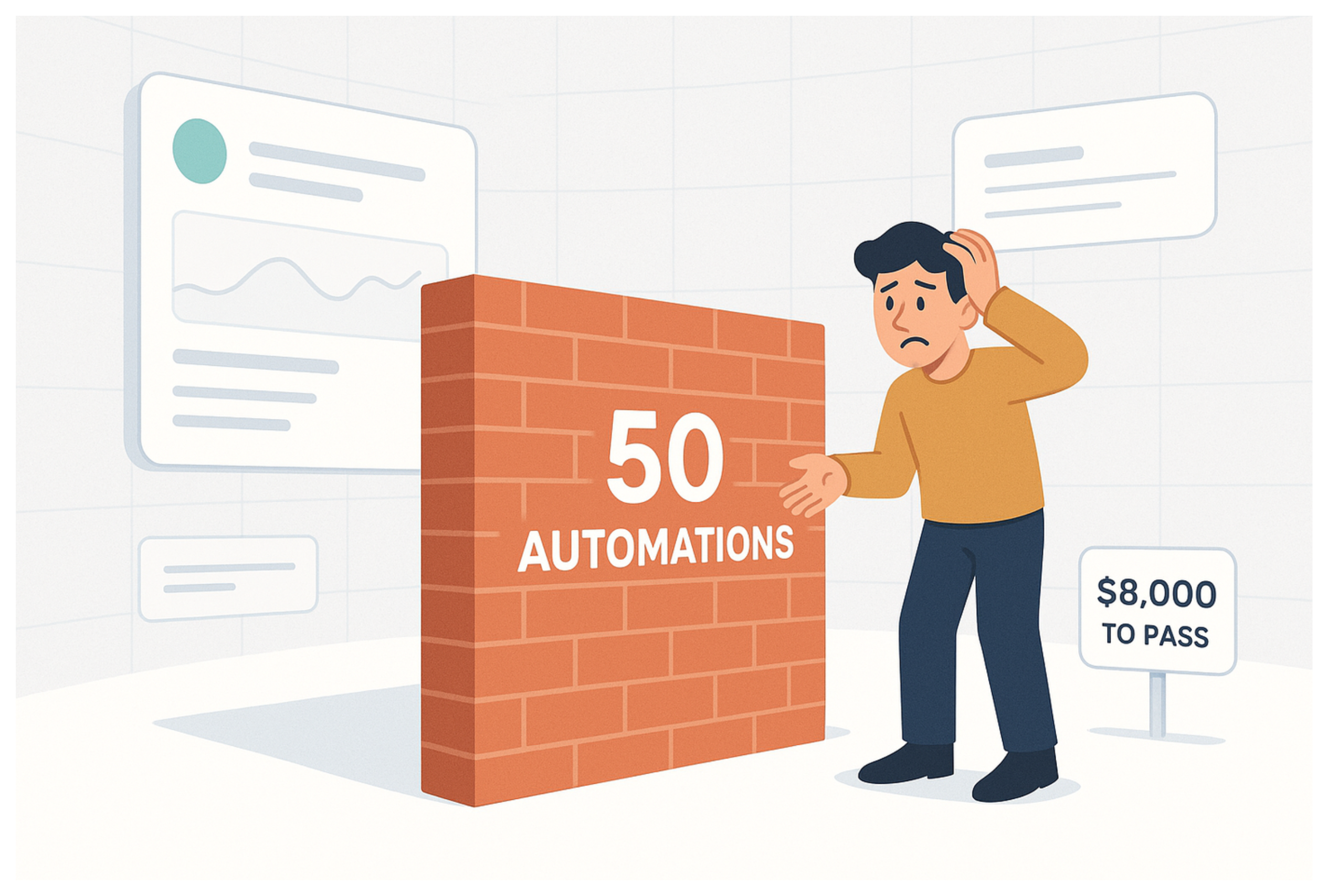Hitting Airtable’s 50 Automation Limit? Here’s What You Can Do
If you're using Airtable Automations, there's something important you might not realize. Each base is limited to 50 automations.
This isn’t clearly stated on the pricing page, and it doesn’t come up during the upgrade process. It’s mentioned in the documentation, but tucked away in the FAQ section.
Most users only find out once they hit the limit and by then, it’s a frustrating surprise, especially if your workflows are starting to grow.
If you’re on the Team plan ($240/year) or Business plan ($540/year), and you need more than 50 automations, your only option is to upgrade to Enterprise, which starts at over $8,000 per year.
The frustrating part is you do not need all the extra Enterprise features. You just need a few more automations.
Right now, the pricing model is all or nothing. Whether you need just one extra automation or a hundred, there’s no middle ground. No option to pay for additional automations. No flexibility.
Just a hard limit of 50, unless you’re willing to pay thousands more.

So what can you do instead?
Here are a few ways to work around the limit:
1. Split your workflow into multiple bases and sync them
Since each base gets 50 automations, splitting your workflow across multiple bases gives you 50 automations per base to work with. You can use synced tables to keep everything connected.
If there are parts of your base that can be separated into their own base, this can be a good workaround.
2. Merge Automations
Instead of having a lot of separate automations, you can combine them into fewer, more flexible ones that run off specific triggers.
For example, if you have multiple automations that are all time-based or triggered by the same event (like a record update), you can merge them into a single automation.
Inside that automation, you can use conditional logic to decide what actions should run and when.
3. Use Scripting
Using scripting is a powerful way to make your automations do more with less. Instead of setting up multiple automations with different conditions, you can create a single automation that runs a script to handle many tasks at once, all triggered by the same event.
Learning to write scripts may take some time if you’re new to it, but it’s worth the effort. Scripts give you much more flexibility and control, letting you work around the 50-automation limit without adding complexity.
4. Use No-Code Tools
If none of the other options work for you, no-code tools like Make, Zapier, or n8n can help.
These tools let you trigger actions based on record updates, filters, time delays, and more. Plus, they can run complex multi-step workflows without being limited by Airtable’s automation caps.
They are a good option when you need to handle heavier automation tasks or want to avoid managing too many automations inside Airtable itself.
It’s definitely frustrating to hit a wall like this, but with the options above, you can keep things running smoothly without having to jump to Enterprise.
Need help or have feedback? Email me at[email protected]